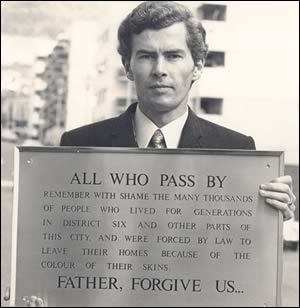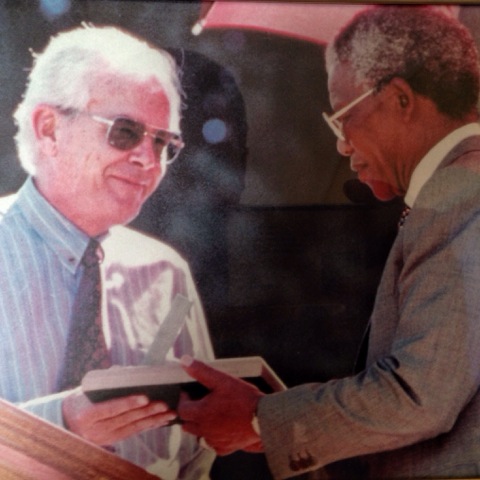 The notion of Church unity, and visionary leadership, has remained on my mind today. Here is a picture of another visionary leader in Southern African Christianity, and in particular in Southern African Methodism. The picture shows a young Peter Storey - below is an extract from a paper I presented recently in which I argued that the Methodist Church's courageous statement to remain 'one and undivided' in the face of the South African Government's racial separation and the impending group areas act, was an act of great courage! If only we had that courage now. Here's the picture, and the excerpt from the paper expounding on it.
The notion of Church unity, and visionary leadership, has remained on my mind today. Here is a picture of another visionary leader in Southern African Christianity, and in particular in Southern African Methodism. The picture shows a young Peter Storey - below is an extract from a paper I presented recently in which I argued that the Methodist Church's courageous statement to remain 'one and undivided' in the face of the South African Government's racial separation and the impending group areas act, was an act of great courage! If only we had that courage now. Here's the picture, and the excerpt from the paper expounding on it.
One of the most vivid examples of how 1958 statement of intention was applied in a local Church context was the exemplary struggle of Peter Storey between 1956 and 1981 to work against the Nationalist Government's forced removal of coloured people (mostly Methodists) in Cape Town. The multiracial congregation, Central Methodist Mission, in Buitenkant Street, was significantly disrupted by the forced removals. The Church naturally opposed the removals in every possible way. Yet when the removals were eventually enacted in 1966 the congregation decided to remain united in spite of the forced removals. Ministries of care and support for those who had been removed were set up. Transportation was arranged to bus the congregants the many miles from the settlement areas to the Church so that multi-racial services and meetings at the Church could continue unabated. A plaque was put on the front of the Church, facing the busy Green Market Square, that read:
All who pass by remember with shame the many thousands of people who lived for generations in District Six and other parts of this city, and were forced to leave their homes because of the colour of their skins. Father forgive us...
It was during this period that the some stark theological divisions began to surface within the mainline denominations in Southern Africa. While the Methodist church maintained the principles of unity and inclusiveness at its highest levels, and drew attention to it in their official statements, this was sadly not the case in most local congregations, and also not adequately reflected in the leadership of the denomination.
Unity is costly, but so is the cost of truth, as Pete reminded me in a recent post.
 Tuesday, May 27, 2014 at 6:00PM
Tuesday, May 27, 2014 at 6:00PM 




